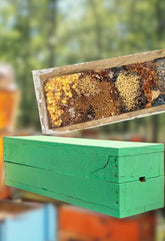Meliponiculture
What is Meliponiculture ?

Why is Meliponiculture Different from Apiculture?
Unlike apiculture, which focuses on honeybee keeping, meliponiculture specifically targets stingless bees. These bees play a crucial role in pollination and ecosystem health, making them a valuable asset in sustainable agriculture.
What is the Traditional Practice of Meliponiculture?
Meliponiculture has been practiced for centuries by pre-colonial populations. These indigenous communities recognized the importance of stingless bees in their environment and developed techniques to manage and breed them effectively.
What are the Benefits of Meliponiculture?
Meliponiculture generates benefits in various domains:
Environmental Benefits:
Stingless bees are efficient pollinators, contributing to the biodiversity and productivity of ecosystems. By promoting the conservation of these bees, meliponiculture helps maintain a healthy environment.
Social Benefits:
Engaging in meliponiculture can empower local communities by providing them with a sustainable source of income. It also preserves traditional knowledge and practices, fostering cultural heritage.
Cultural Benefits:
Stingless bees hold cultural significance in many societies, symbolizing harmony with nature and the interconnectedness of all living beings. Meliponiculture helps preserve these cultural values and traditions.
Economic Benefits:
As the demand for organic products and pollination services increases, meliponiculture presents a lucrative opportunity for beekeepers. Stingless bee products, such as honey and propolis, are highly valued for their unique flavors and medicinal properties.
Overall, meliponiculture offers a sustainable and holistic approach to beekeeping, promoting environmental conservation, social empowerment, cultural preservation, and economic prosperity.








